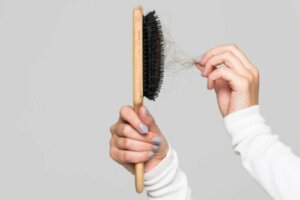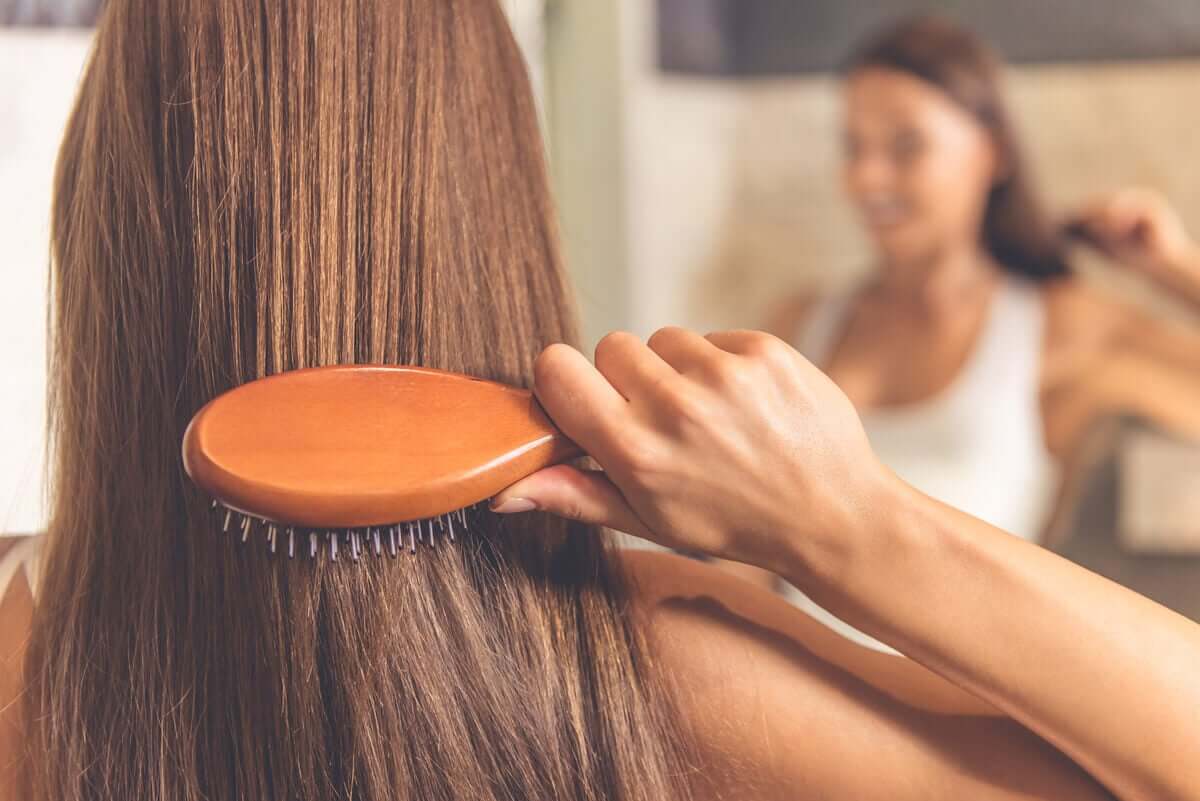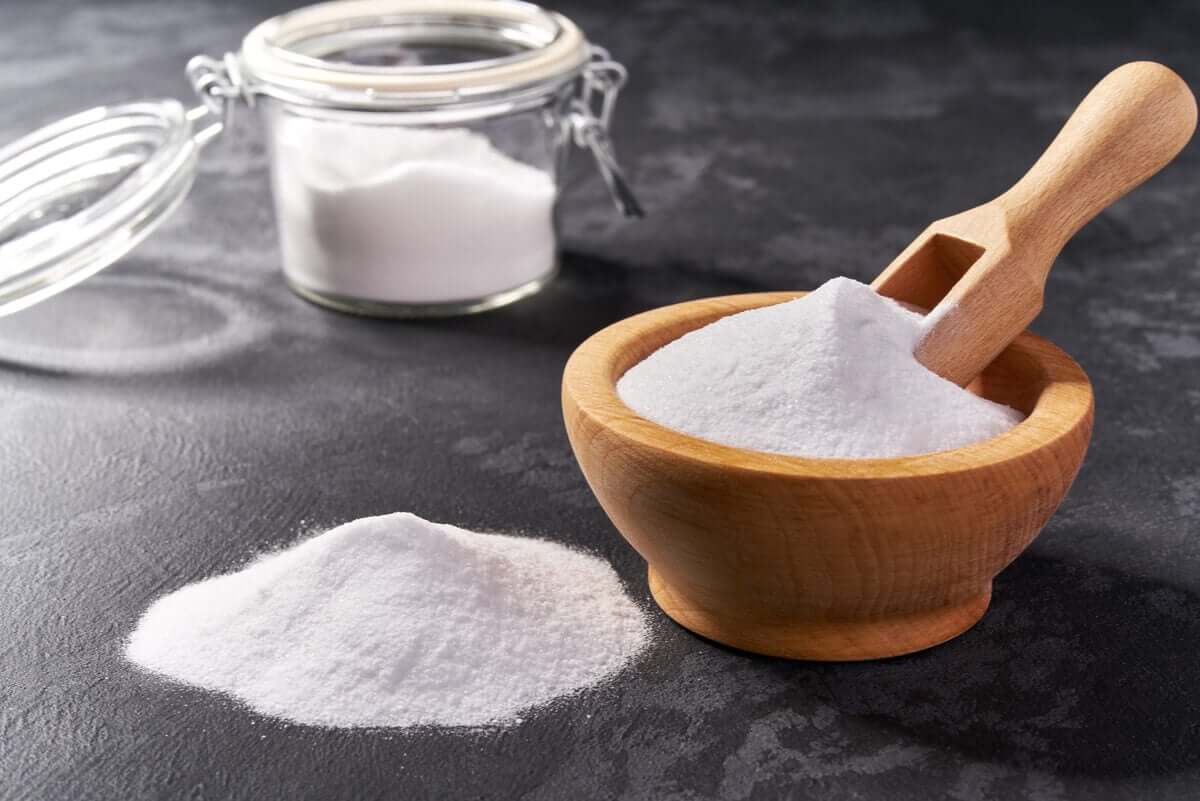Tips on How to Clean Your Hairbrush

Do you know how to clean your hairbrush?
It’s normal for this tool to start to accumulate strands each time you use it. Some of them break off during the process or fall out to make way for new hair. Either way, hair isn’t the only thing that starts to build up in your brush, so it’s important to clean it regularly.
Carrying out this cleaning and disinfection process will undoubtedly prevent things that can affect your hair or scalp. This is because dust particles, oil from the products we use (or that the skin of the head secretes), bacteria, and contaminants from the environment build up in our brushes.
We want to share with you some tips that will facilitate the cleaning process and prevent that dirt from accumulating with each use and affecting your hair.
Why is it important to clean your hairbrush?
As we mentioned, hairbrushes can become a source of dirt, bacteria, and fungi. In fact, studies have shown that the hair on the head, eyebrows, and beard are home to various microorganisms from the environment.
Therefore, washing your hair and cleaning your brush are essential in keeping these microorganisms from proliferating. Ideally, you should do both at the same time, since combing clean hair with a dirty brush only puts the bacteria that you’ve just washed off back in your hair.

How often should you clean your hairbrush?
According to the American Academy of Dermatology, we lose between 50 and 100 strands of hair every day. Most of them end up entangled in our hairbrushes. So do the math: How many hairs can accumulate per week or month? Quite a lot, right?
That’s why, although there are no rules for washing the hairbrush, we recommend carrying out the cleaning process frequently. This could be as follows:
- Once a week if you apply a lot of products to your hair, especially hairspray or non-rinse treatments.
- Once every two weeks if you usually wear your hair clean and use only a few products, treatments, or oils.
Either way, you can remove the excess strands that get stuck in the brush every day.
You can also read: The Best Tips to Wash Greasy Hair
How to clean your hairbrush
Cleaning and disinfecting your brush or comb is very easy, doesn’t take long, and you can use natural ingredients such as baking soda, which doesn’t alter the pH of your skin. In fact, it helps to regulate it and won’t damage or mistreat your brush.
Let’s look at the step by step instruction on how to clean your hairbrush effectively.
1. Remove excess hair
If you haven’t been removing loose strands from your brush already, this is the first thing you’ll need to do. Depending on the type of brush and how much excess hair you’re dealing with, it might be hard to do it with just your hands. If so, use a rat tail comb to help.
You can also use another type of stiff-bristle comb, a pair of scissors, or some other pointed element. Do this step carefully so you don’t hurt yourself.
2. Soak to remove dirt from the brush
Even if there are no visible hairs left, you’ll to soak the brush in warm water with shampoo or baking soda to remove the microorganisms and dirt stuck in the spaces that you can’t see. This is how you should do it:
- Place some warm water in a plastic container.
- Add the shampoo or baking soda and stir it so that it dissolves well.
- For more efficient action, use shampoo and baking soda together.
- If the brush is completely plastic, submerge completely and shake it. Leave it there for five minutes.
- For brushes that have some padding on the handle or some other area, this area mustn’t come into contact with the solution you’ve prepared. In this case, immerse the brush upside down and let the water level be just high enough to soak the bristles.
- The previous point applies to wood brushes as well.
3. Remove dirt particles with a toothbrush
If during the soaking and shaking process you notice that certain dirt particles are still attached to the brush, you’ll need to remove them with a toothbrush. To do this, remove the brush from the solution mentioned above, shake it to remove excess water, and start combing the bristles with a toothbrush.
If a lot of dirt comes out, you can dip the brush again in the warm water to remove it. Keep doing it until you’re satisfied with the cleanliness.
4. Disinfect the brush
This extra step to disinfect is optional. You’ll only need a bowl of warm water and some white vinegar:
- Mix half a cup of white vinegar with half a cup of warm water.
- Soak the brush for about 15 to 20 minutes.
- Depending on the materials it’s made of, keep in mind the recommendations of the first point.
- Continue with the next step.

Read more: Vinegar as a Disinfectant Around the House
5. Dry the brush
Once the cleaning process is completed, wash the brush with a little cold or warm water. Shake it and put it upside down on a dry cloth. Let it dry and you’ll have a completely clean hairbrush!
Enjoy a clean hairbrush
Now you know how to clean and disinfect your hairbrush! Remember to do this at least twice a month. That way, you’ll eliminate any threat that could harm the health of your hair and scalp.
All cited sources were thoroughly reviewed by our team to ensure their quality, reliability, currency, and validity. The bibliography of this article was considered reliable and of academic or scientific accuracy.
- ¿Cómo hacer desinfectantes caseros? Centro Interdisciplinario de Biodiversidad y Ambiente. Disponible en: https://ceiba.org.mx/publicaciones/COVID19/C%C3%B3mo%20hacer%20desinfectantes%20caseros.pdf
- Antonieta Garrote, Ramón Bonet. Alteraciones del cabello y del cuero cabelludo, Cosmética capilar de tratamiento. Offarm. Vol. 27. 3(72-18), 2008. Disponible en: https://www.elsevier.es/es-revista-offarm-4-articulo-alteraciones-del-cabello-del-cuero-13116881
- Roberto Holgado Cuadrado, Elena Irina Mirt. Análisis del crecimiento bacteriano en diversas zonas vivas e inertes. Disponible en: http://www.iesjuangris.com/index.php?option=com_attachments&task=download&id=8
- DO YOU HAVE HAIR LOSS OR HAIR SHEDDING? American Academy of Dermatology Association. Disponible en: https://www.aad.org/public/diseases/hair-loss/insider/shedding
This text is provided for informational purposes only and does not replace consultation with a professional. If in doubt, consult your specialist.








